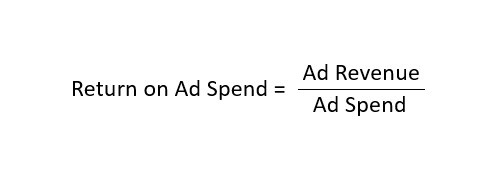SEO vs. PPC: What Should You Invest In?
Rather than asking if SEO is better than PPC, consider how SEO and PPC can work together to increase traffic from search. …
Pay-per-click digital advertising can be one of the fastest ways for companies to build brand awareness, drive traffic to a site, and generate high-quality leads. Whether your company is just getting started with PPC advertising, or you’ve been running PPC campaigns for years, one of the biggest challenges is measuring the success of your efforts.
There are a few different ways for digital advertisers to measure success. Below, we’ll examine how to calculate:
Calculating ROI is one of the basic responsibilities of managing a PPC campaign. According to Google, ROI is usually “the most important measurement for advertisers because it shows the real effect that [a PPC campaign] has on your business.” While it’s important to keep tabs on vanity-type metrics, such as number of clicks and impressions, it’s often more valuable to understand how your PPC campaigns are contributing to the success of your business.
ROI is the ratio of your net profit to your total costs. When calculating the ROI from your PPC campaigns, remember to consider all expenses in your total cost, including:
These expenses will affect both your total revenue and the total cost of your paid campaigns when calculating ROI. The easiest way to calculate PPC ROI is with the following equation:

Different than ROI, ROAS (return on ad spend) calculates how much revenue was earned for every dollar spent. A good rule to start with is to aim to break even, and then optimize from there.
It’s important to understand your break-even point and to set that as a minimum goal to avoid losing unnecessary amounts of money. The break-even point for ROAS is 1:1, which means that for every $1 spent on advertising, you should earn $1 in revenue.
ROAS can be calculated as a percentage, using the following formula:

Google estimates that for every $1 spent on a PPC campaign in Google Adwords, businesses earn an average revenue of $2.
In order to measure your PPC campaigns’ ROI, it’s necessary to track the conversions points, or the actions viewers take on your website after seeing an ad. Common examples of conversions could be filling out a form, calling your business, downloading a whitepaper, or making a purchase.
Google has lots of resources for identifying what actions to track and what tools to use for setting up tracking. If you work with a digital marketing agency or are thinking about working with one, it’s important to make sure they understand how to set this up for you and make sure it’s included in your costs.
The value of each conversion should be greater than the amount spent to get the conversion. To calculate profit per click, simply divide the total profit by the total number of clicks. For example, if you spend $20 on 5 clicks to get one sale and receive a profit of $30 for that sale, your profit per click would be $6. This calculation is a good indication of where the click revenue is coming from.

Let’s use an example of a company spending $2,000 a month on ad spend for two campaigns with a digital advertising agency that costs $3,000 a month. After one month, they brought in $8,000 in revenue from advertising.
The calculation for ROI in this instance will be $8,000 - ($2,000 + $3,000) = $3,000. We’ll divide that total of $3,000 by our expenses ($5,000) which gives us a new total of .6. Take that number and multiply it by 100 and we have a 60% ROI.
As we’ve shown before, ROAS is determined by dividing the revenue generated from ads by the amount spent on them. This example leaves us with a formula of $8,000/$2,000, which gives us a total of $4. Multiply that number by 100 and you end up with a $400 ROAS, meaning you earned $400 in revenue for every dollar of ad spend. This is a great example, but not all campaigns will result in this high on ROAS.
ROI gives you a holistic view of how your marketing efforts are driving revenue and maintaining profit. ROAS can be broken down to lower levels like campaign performance to determine how they’re driving sales and where budgets need to be adjusted to improve marketing spend.
All three of these formulas can be effective ways to measure the success of your PPC campaigns. By tracking these digital advertising analytics, you can better understand your target audience and their search behavior. This knowledge also puts you in a better position to optimize your ads and identify where to increase or decrease your budget for certain campaigns.
If your organization is in need of assistance with Digital Advertising, Analytics, or Reporting, or simply needs a better partner to maximize your digital advertising investment, get in touch with us! Aztek’s team of digital advertising professionals can work with you to implement and optimize highly targeted PPC campaigns to generate leads, drive sales, and increase awareness for your brand.